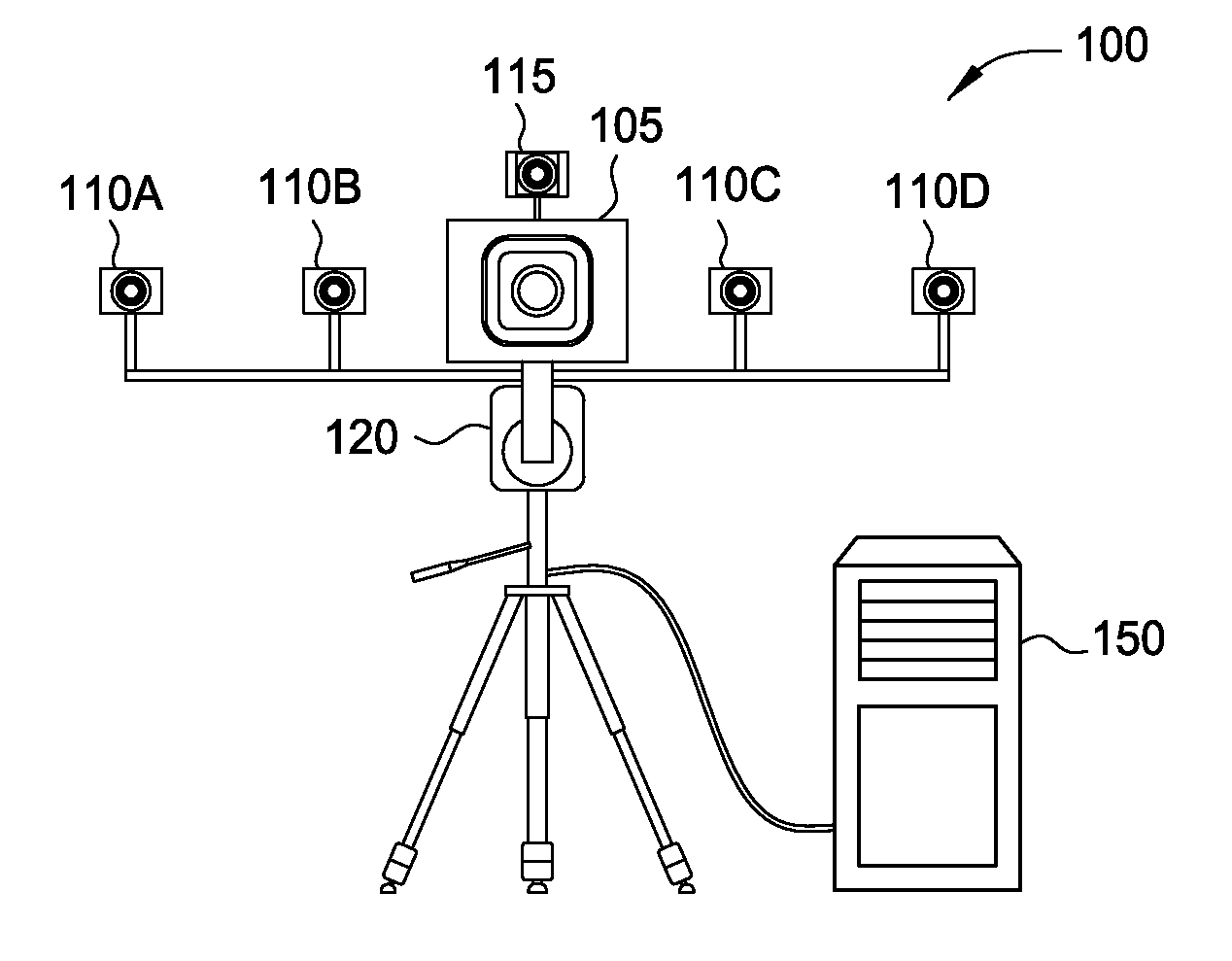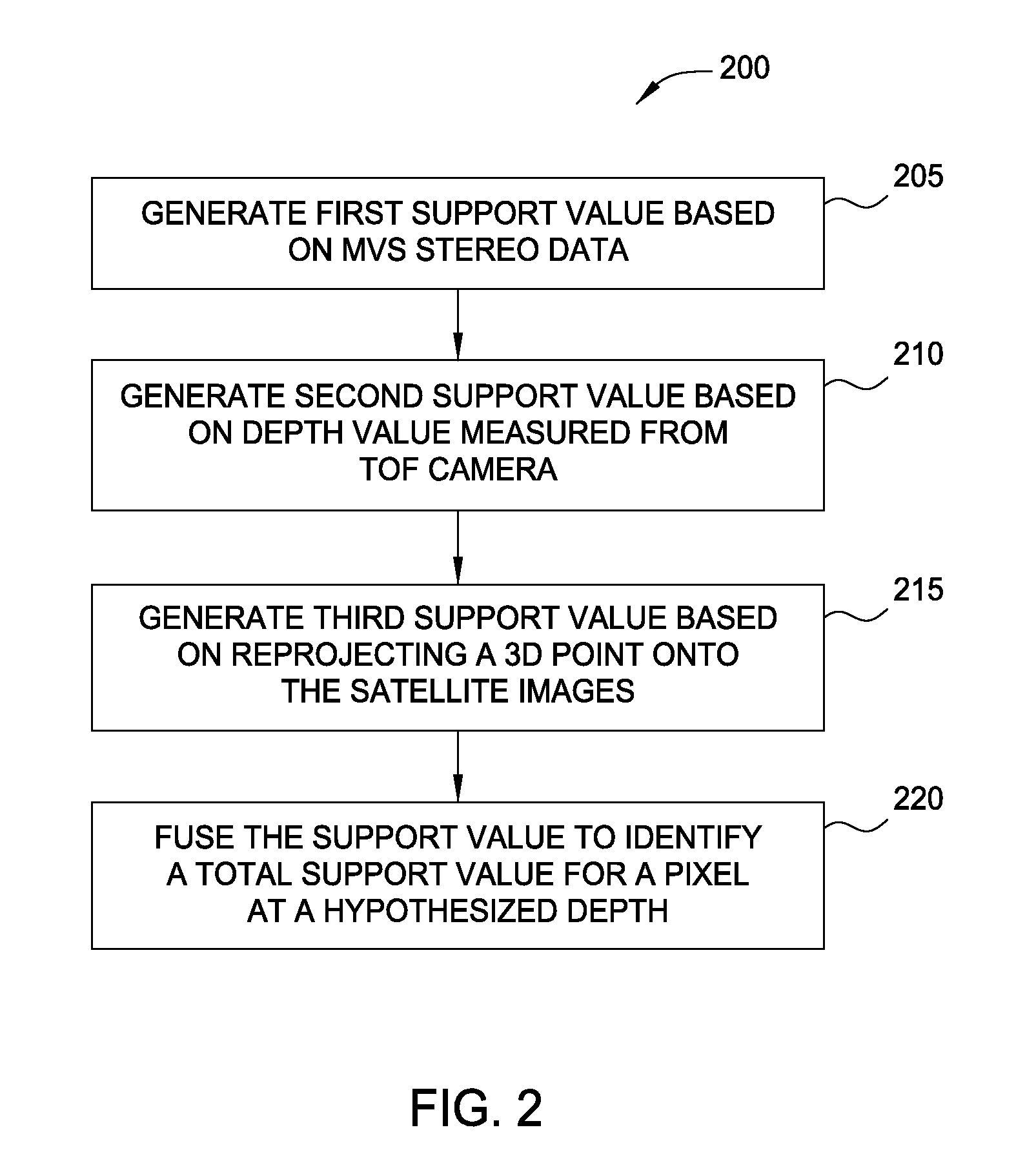Sensor fusion for depth estimation
- Summary
- Abstract
- Description
- Claims
- Application Information
AI Technical Summary
Benefits of technology
Problems solved by technology
Method used
Image
Examples
Embodiment Construction
[0018]To generate a pixel-accurate depth map, in one embodiment, ToF data from a range-estimation sensor (e.g., a ToF sensor) is combined with data from multiple cameras to produce a high-quality depth measurement for pixels in an image. To do so, a depth measurement system may use a plurality of cameras mounted on a support structure to perform a depth hypothesis technique (e.g., plane sweeping) to generate a first depth-support value. Furthermore, the apparatus may include a mounted ToF sensor which generates a second depth-support value based on depth estimates provided in the ToF data. In addition, the depth measurement system may project a 3D point (i.e., a pixel at a particular depth) from a reference image captured by a reference camera onto an auxiliary image captured by one or more auxiliary cameras. By comparing the color of the corresponding pixels in the auxiliary image with the color of the 3D point in the reference image, the system generates a third depth-support valu...
PUM
 Login to View More
Login to View More Abstract
Description
Claims
Application Information
 Login to View More
Login to View More - R&D
- Intellectual Property
- Life Sciences
- Materials
- Tech Scout
- Unparalleled Data Quality
- Higher Quality Content
- 60% Fewer Hallucinations
Browse by: Latest US Patents, China's latest patents, Technical Efficacy Thesaurus, Application Domain, Technology Topic, Popular Technical Reports.
© 2025 PatSnap. All rights reserved.Legal|Privacy policy|Modern Slavery Act Transparency Statement|Sitemap|About US| Contact US: help@patsnap.com



